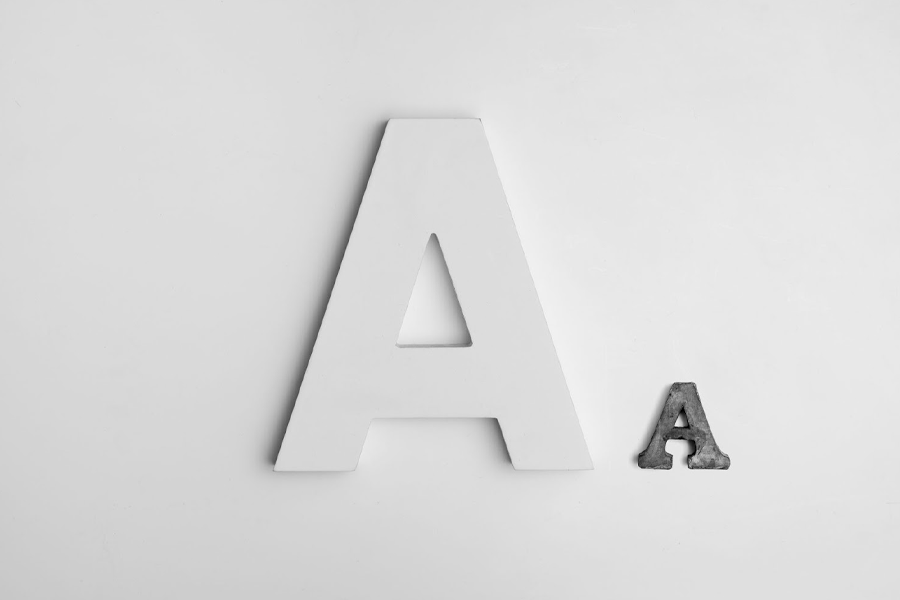When creating content, some say just a few words should immediately attract the reader’s attention. These few words are the headings and subheadings of a content.
If you are in the content writing world or developing marketing strategy for your business, you need to know how to make scannable content that would make the reader’s stay. Lucky for you this article is all about that. Let’s get started!

The Role of Headings and Subheadings in Content Design
Headings and subheadings play a huge role in grabbing the reader’s attention the first few seconds they lay their eyes on the content. Headings carry the power to redirect the readers to the most important part of the landing page and with that it can increase the chances of conversion.
Using subheading and heading to create specific sections into your content can help your readers to get the flow of your content and understand the context.
Main heading in the content serves as the entry points for every reader. It helps draw the reader to the content, while headings provide a roadmap for what are the contents inside, leading the readers on the part of the content they wanted to read.

Key Principles for Creating Scannable Content
Modern screen readers are sometimes hard to please, they will not read your contents if they find it too long or not catchy. Here in the Philippines most readers tend to delve deeper into the content if the text begins with major words or interesting words.
In order to create a good scannable content you need to know these key principles:
- Write in short paragraphs: Your first paragraphs should be short. You can start with crafting a regular paragraph with at least 50 – 80 words, not too much and not too less. Also use a single-line space when writing a paragraph, then use a double space to indicate a new paragraph.
- Use subheadings: Subheadings work as a mini headline to give further supper to the main heading/headline. Always remember the importance of subheadings’ important.
- Use short sentences: A paragraph text ideally should contain 5 sentences or below. Keep each sentence short to not strain the reader.
- Use bulleted points: Rather than writing your list in a sentence, use bulleted points to emphasize the information. Always add a new paragraph after a bulleted list.
- Add royalty free images: Sprinkling images in your content adds to the visual impact of the content and to make it more clear and vivid.
- Add links to external sources if applicable: Redirecting the readers to external
sources as your store or website is a great tactic to drive sales and conversion.
Always be concise with what message you want your target audience to receive and to gain their attention. Be sure to create headings applicable to your brand and not just some clickbait.

Defining Clear Information Hierarchy
Scannable content has different formatting. It is usually written in an inverted pyramid style. Inverted pyramid means that the most important information is already presented at the top of your pillar pages and blog posts. Next is the body text which consists of supporting information to understand the main information. And lastly, you put background information that is good to know.
Defining a clear information hierarchy is important in writing a scannable content. Information hierarchy refers to the arranging and displaying of information in a concise and organized way. Its purpose is to prioritize the most important information, highlight the key terms, and give a logical flow to the readers.
You need to take note of the components of the information hierarchy in order to create a good one for your content. Typography is among the components, the effectiveness of font used, its color, and size appeals to the viewers. Next is the spacing, navigation menus, visual hierarchy, etc.
Using Descriptive and Engaging Headings to Capture Attention
To make the reader engaged you should use descriptive and engaging headings to capture their attention. Have some sense of urgency in your headlines and don’t forget to decide what tone of voice to use.
Also, use powerful words that can emotionally trigger the readers to be attentive to the content, but most importantly do not forget to use simple words and make the readers of all ages understand what you are writing.
Curiosity plays a huge role in content writing. Curiosity grabs the attention of the readers to be naturally drawn to the website. You can use questions in your headlines or teasing information, in order to spark curiosity.
Structuring Content with Meaningful Subheadings
Breaking down complex ideas means you need to structure relevant subheadings to further support the main heading. Consider your subheadings as mini-headers and always make sure that it is not straying from the main heading, make sure it is always relevant.
When crafting a subheading you need to ensure that your subheading has a key highlight point between different aspects of the topic. Always make sure that it is simple, practical, and relevant. Subheadings help your readers locate specific information and let them digest the information wholly, by providing section labels.
Applying APA Headings and Subheadings
The title or main heading should be the most noticeable text in the whole content and followed by other headings and subheadings. It is very important to format the headings in order to give a complete roadmap or seamless navigation for your readers.
Applying APA style in headings is widely used for formatting research papers and academic articles. APA headings provides comprehensive guidelines for crafting subheadings and headings.
When using APA level headings, you need to take note of the header level. Level 1 headings are used for the main sections (ex. Introduction,) and Level 2 headings are embodied with subsections within each main section. Titlecase is also used for APA headings, this means that each first letter of the major words in the titles are capitalized.
Using Proper Heading Tag Hierarchy for SEO and Accessibility
Aside from helping the overall visual of the content to be more organized, headings play a crucial role in Search Engine Optimization (SEO). Using proper heading tags (ex. H1, H2, H3, H4,etc.) not only make your content visually appealing but it also enhances the importance of different sections to search engines.
Only using large text bold italics does not make the heading tag correct. These are some common mistakes in content writing, so always use google docs or microsoft word when creating headings and subheadings for your contents.

Balancing Text and Visual Content within Headings and Subheadings
Incorporating visuals to text is important and needs to be balanced in a content to make it not only visually appealing to the reader but also comprehensive and organized. Pictures not only break the monotonous visual of your content but it also serves as a visual landmark to help the reader visualize what you are talking about
Pictures capture the reader’s eye and draw it to the corresponding heading and paragraph. Pictures also sometimes indicate that this content is more important than the rest of the subheadings that do not have any photo. Also, you need to make sure that your headings, subheadings, and paragraphs are spaced correctly.
It is a great strategy to use pictures to emphasize that this specific section of the content is important and to use simple words. A great copywriting and content writing piece should be understandable by even a five-year-old, or your elderly. Do not use complex phrases, because it would make your text harder to understand for your reader.
Last but not least, eliminate distracting elements in your copy and always use an active voice. The key to a good scannable content is concise writing, well-structured, consistent formatting, bullet points, and lastly, mobile friendly.
Frequently Asked Questions
What is scannable content?
Scannable contents are text and images formatted and layout in a way that readers can seamlessly and quickly read it as they scan the page/content.
How many words should a scannable content have?
Ideally a scannable content should have at least 400-600 words.
How many subheadings should a scannable content have?
Ideally you can put three to four subheadings to keep your readers moving if your content is long.